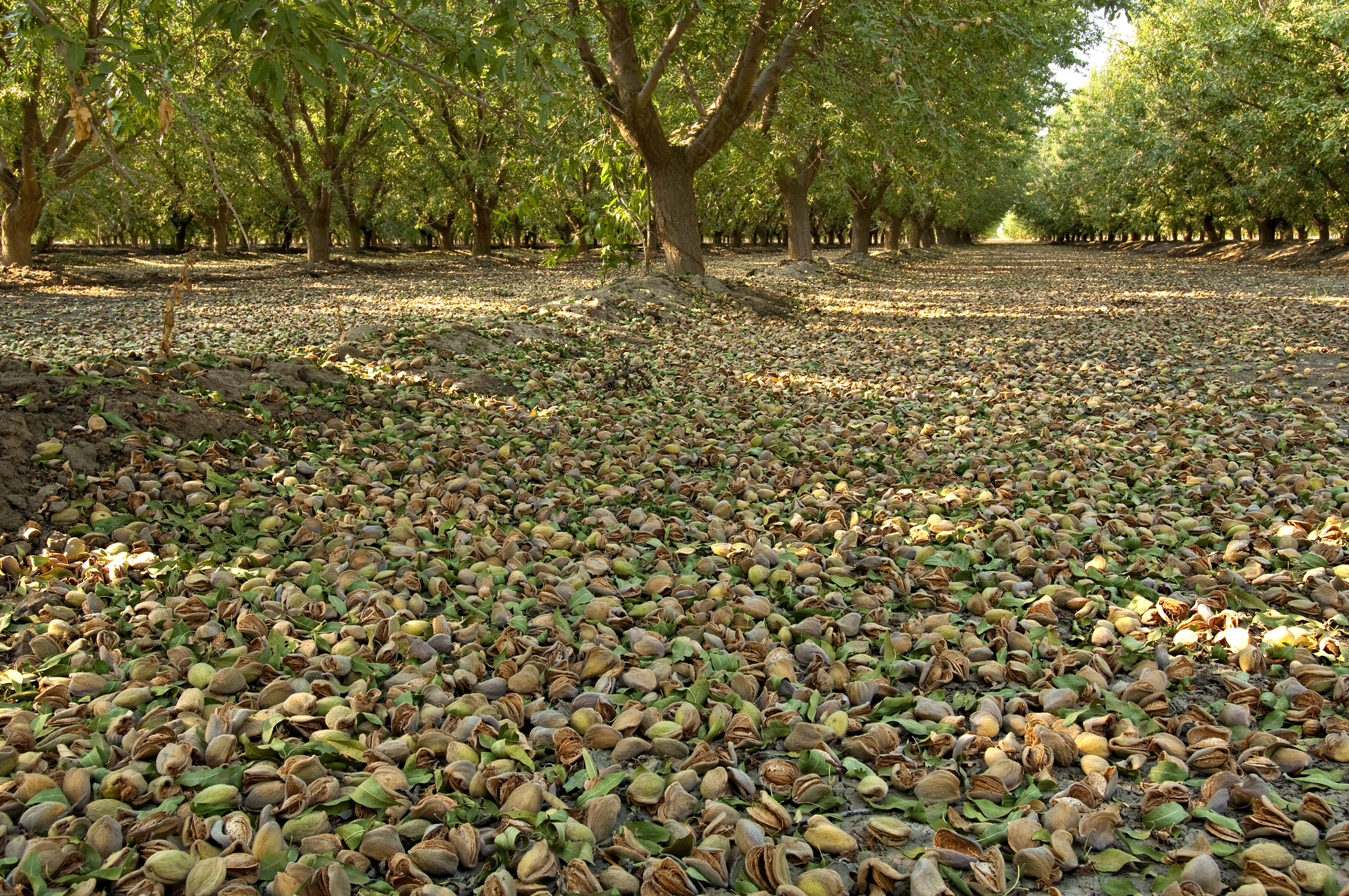By Dr Libby Rens
Summary
Fall dormancy is an ideal time to make fertility plans for your almond orchard. Almonds are grown throughout California’s Central Valley with 1.2 million bearing acres in 2020. The biggest value for incorporating a potassium magnesium sulfate fertilizer like Intrepid Trio® is most concentrated in the Tulare Basin, between Fresno and Bakersfield, where soils are lighter, and magnesium deficiency is more common. Almonds are known to be heavy potassium users, and potassium, in particular, is key for almond orchard productivity (California Almonds). Intrepid Trio® is an ideal low-chloride potassium, magnesium, and sulfate source for orchards.
Almond Nutrient Management

The potassium component of Trio® is key for the development of the hull, shell, and kernel (California Almond), as well as helping the tree regulate water loss, grow, flower, fruit, and store energy (UCANR). Visible deficiency symptoms include pale leaves rolled into a boat shape with tip and marginal scorching (California Almonds). Around 180-230 lbs of K2O is recommended, split into 3 applications throughout the year. UC Davis generally recommends applying about 50% of the potassium at post harvest, 20% in May, and the final 30% in June.
Trees that received no potassium in a heavy crop year yielded 15% lower the following year, compared with trees that received adequate potassium.– Katherine Jarvis-Shean, UCCE Orchard Advisor
The advantage of Trio®, in many cases, is the addition of magnesium to a potassium fertilizer. Magnesium deficiency is typically observed in sandy soils, which is a condition that promotes leaching of magnesium (Almond Production Manual). Magnesium deficiency causes poorly branched almond trees. Leaf tips and margins become chlorotic and subsequently necrotic, accompanied by curled leaf margins (Yara). Typically, the critical concentration for plant-available magnesium is 100-150ppm, with supplemental magnesium recommended at lower values.

Finally, it is important to supply sulfate to maximize almond productivity and nitrogen use efficiency. The sulfur in Trio® is available as sulfate, which is immediately available to the tree and pH neutral, causing no acidifying effect in the soil.
Where and When?
Fertilizer rates should be determined using a soil test for plant-available nutrients, followed by an in-season correction in response to leaf tissue tests (The Almond Doctor). Annual leaf sampling is advised to determine deficiencies and ground-truth the effectiveness of your fertilizer plan. These samples are often collected from July through mid-August for the highest accuracy. However, this doesn’t leave you with much time to make adjustments for the current growing season. Taking proactive samples from May to June will allow additional time to make in-season corrections (California Almonds). The table below lists the critical value (the point at which action needs to be taken) and the suggested range for select nutrients.

Application of Trio® is recommended in late fall after harvest and beginning of leaf drop (Intrepid). Trio® is combined with other fertilizers by retailers and sold to growers as a balanced blend. Almond fertilizer application is generally recommended during spring coinciding with rapid growth, followed by smaller amounts throughout the growing season and postharvest (UC Davis).
Intrepid Trio®
Intrepid Trio® is 100% natural langbeinite, a unique mineral with three essential nutrients in every granule, providing a long-lasting, readily available source of low-chloride potassium (22% K2O), 11% magnesium, and 22% sulfur at a ratio ideal for pecan grown in sandy, high calcium, low CEC soils. Intrepid Trio® is also available in OMRI listed grades approved for organic farming.

